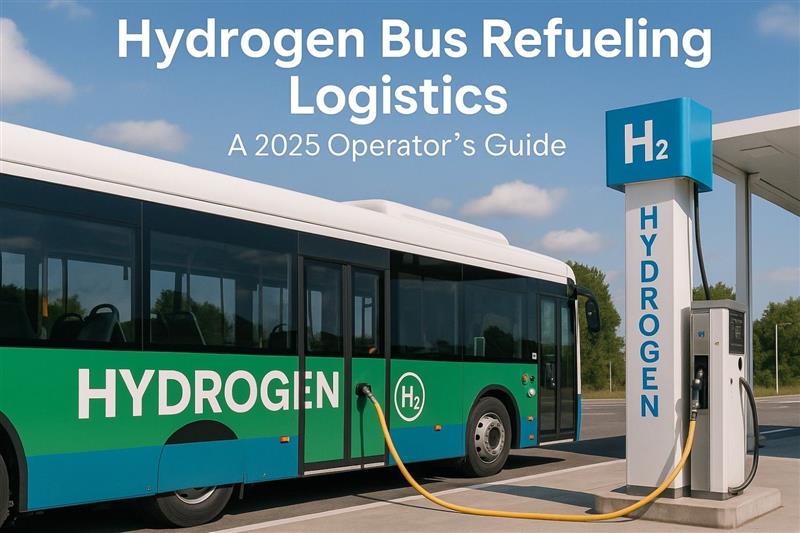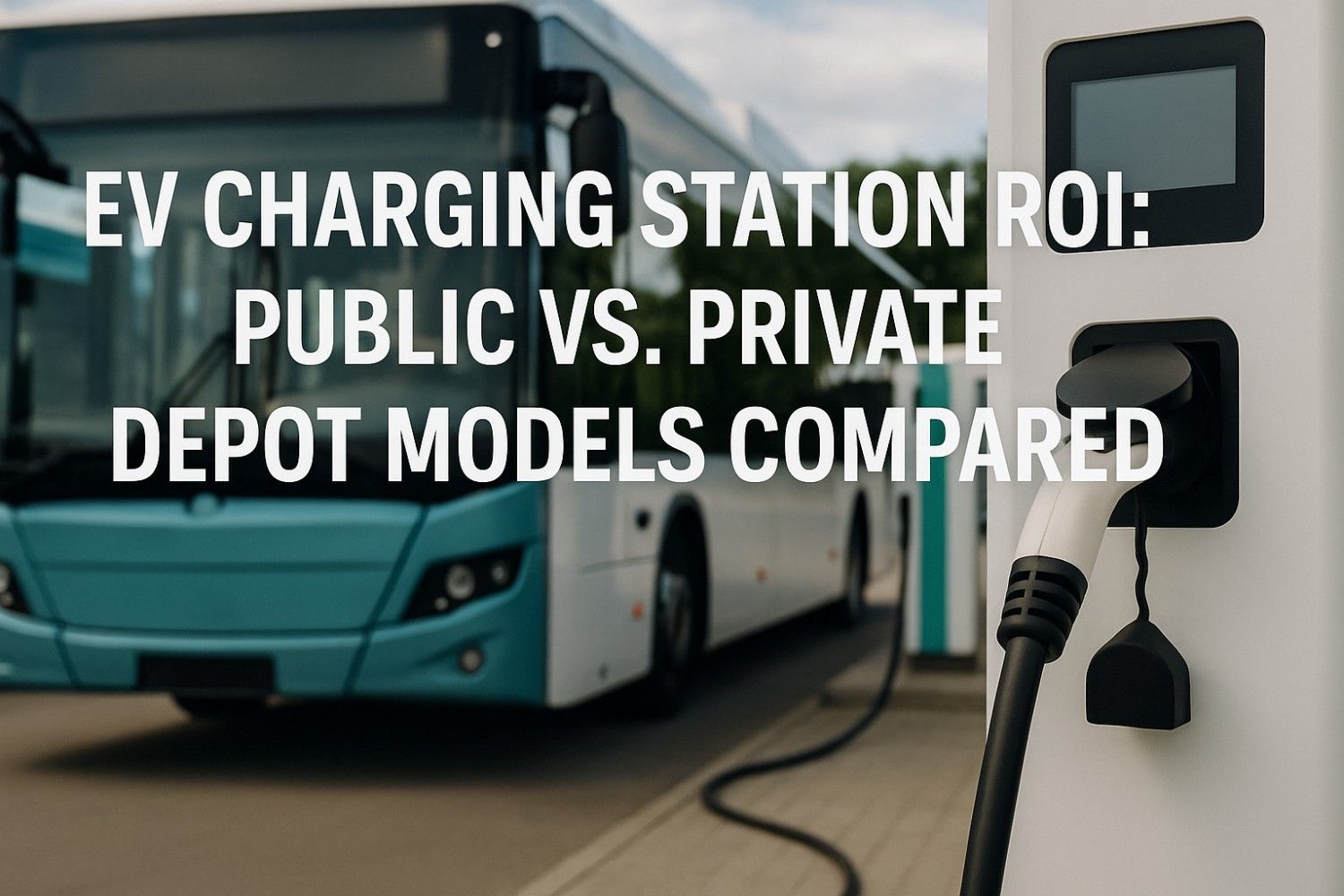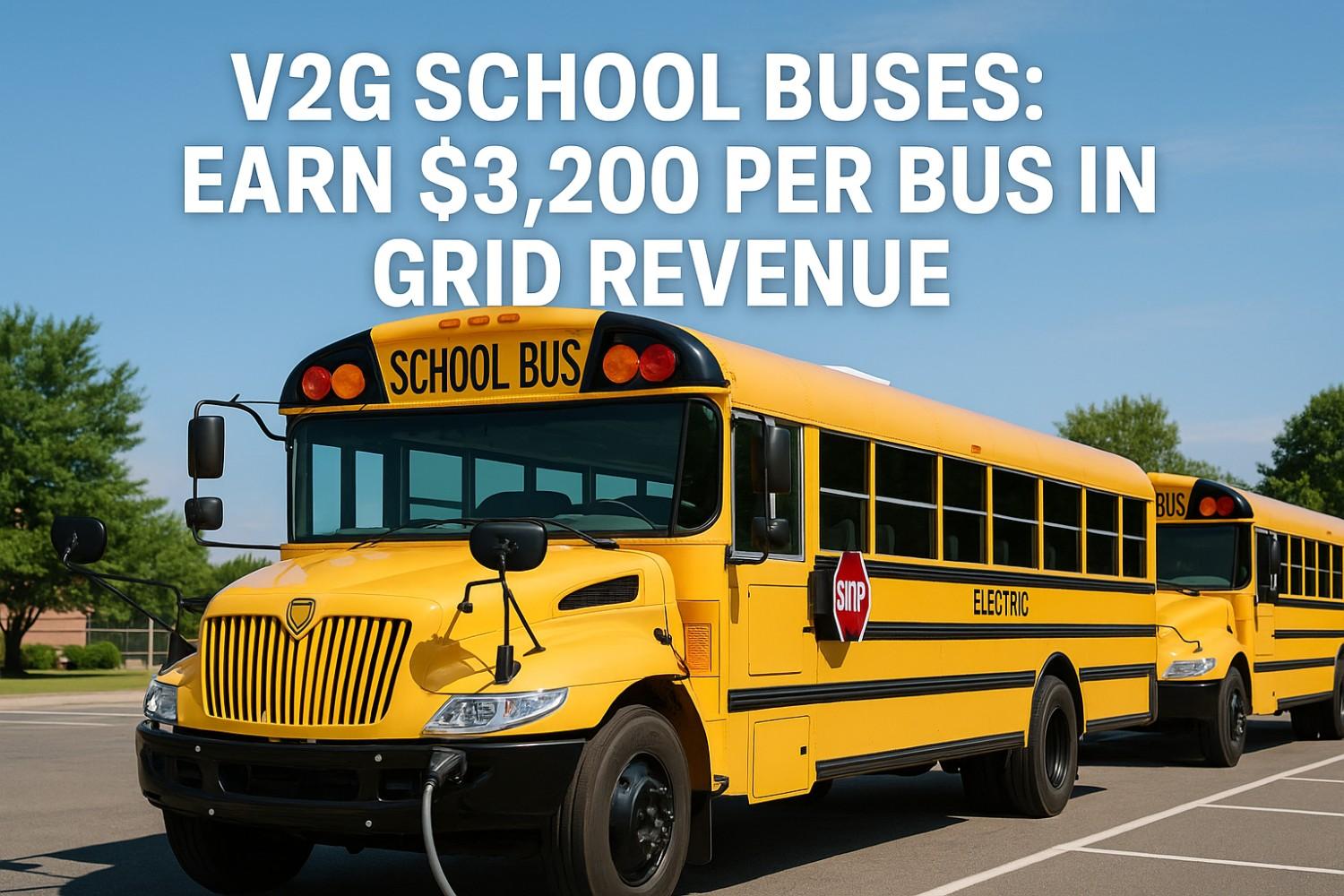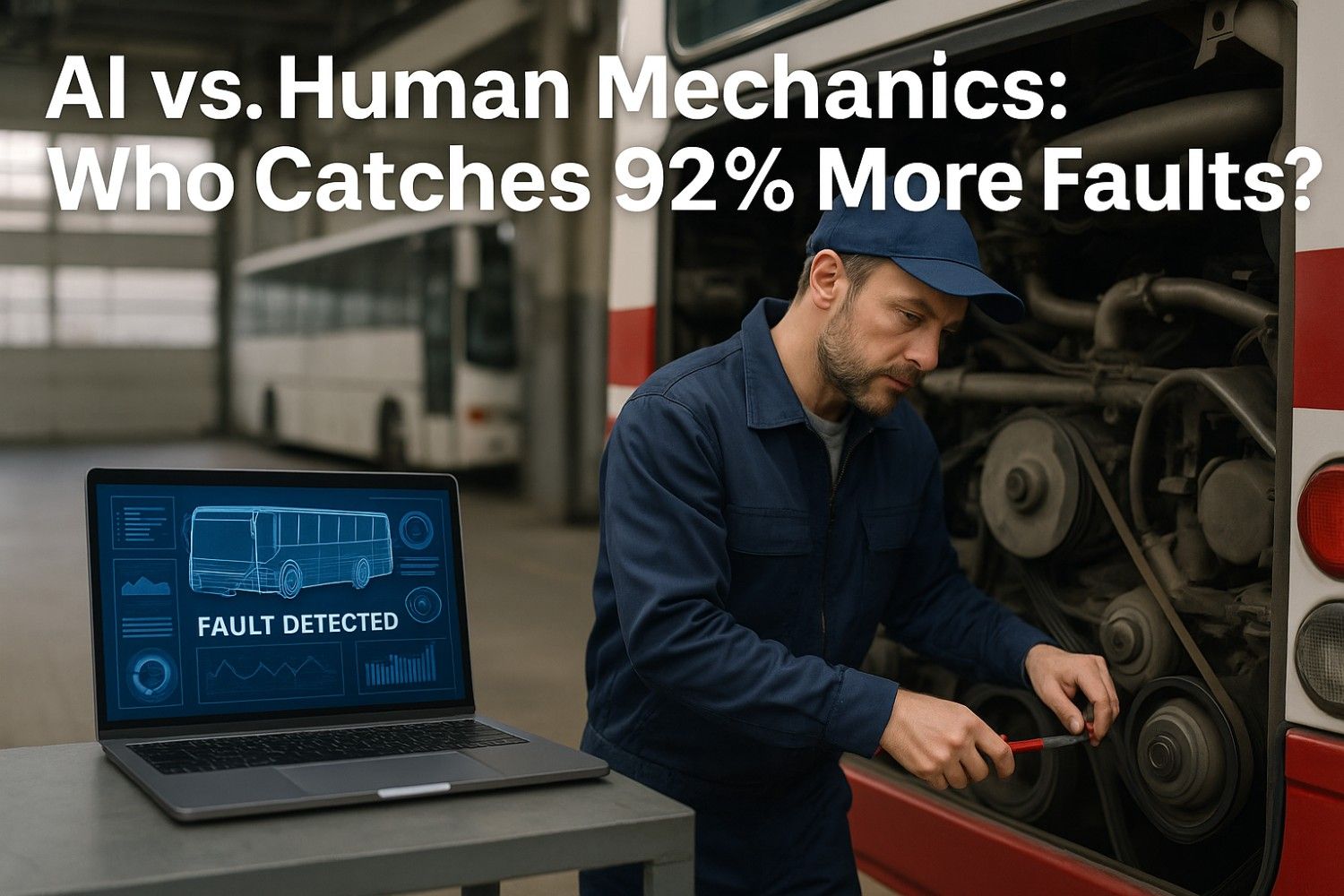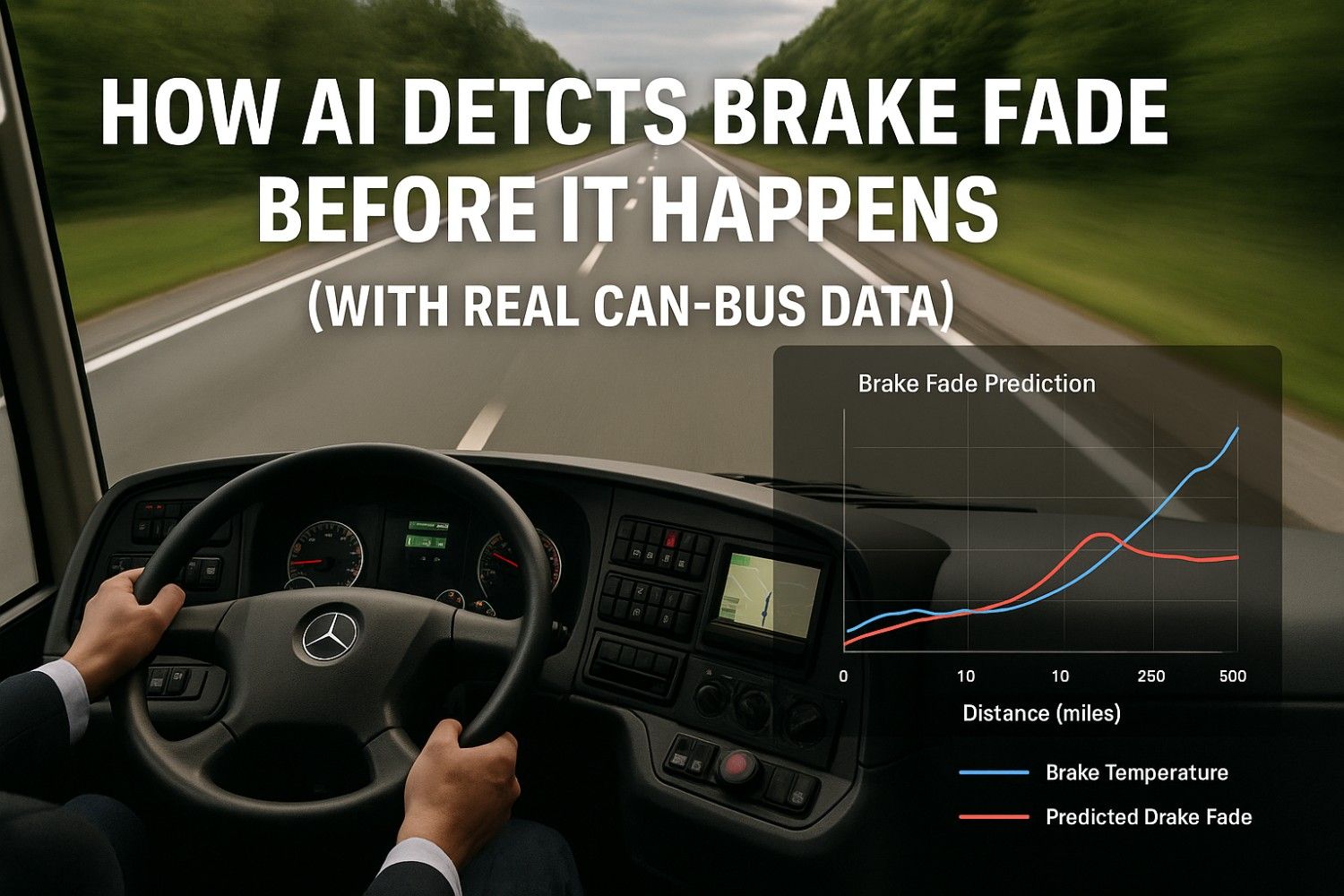Hydrogen fuel cell buses are rapidly moving from experimental technology to practical fleet solutions across the United States. As manufacturing professionals and fleet operators evaluate hydrogen bus adoption, the most critical question isn't whether the technology works—it's whether the refueling logistics can support daily operations efficiently and cost-effectively. Understanding H2 bus logistics has become essential for any operator considering the transition to green hydrogen buses.
The hydrogen refueling landscape has matured significantly since 2020, with new station designs, improved safety protocols, and sophisticated hydrogen fleet management systems that integrate seamlessly with modern CMMS platforms. This guide provides fleet operators with the practical knowledge needed to navigate hydrogen bus refueling logistics in 2025, from choosing the right station type to implementing predictive maintenance strategies that maximize uptime and minimize operational risks.
Understanding H2 Refueling Station Types and Infrastructure Requirements
Choosing the right hydrogen refueling infrastructure is the foundation of successful hydrogen bus operations. In 2025, fleet operators have three primary options, each with distinct advantages and operational considerations that directly impact daily logistics and long-term costs.
On-site hydrogen production and refueling stations represent the most autonomous solution. These facilities use electrolyzers to produce hydrogen from water and electricity on-site, eliminating dependency on hydrogen deliveries. While capital costs range from $2.5 to $4 million for a station capable of refueling 10-15 buses daily, operators gain complete control over fuel supply and benefit from lower per-kilogram costs once operational. The key consideration is securing adequate renewable electricity supply to maintain the environmental benefits of green hydrogen buses.
Mobile refueling stations have emerged as a practical bridge solution for fleets testing hydrogen technology or operating in areas without permanent infrastructure. These trailer-mounted systems can deliver compressed hydrogen directly to fleet yards, with typical capacities of 200-400 kilograms per visit. While per-kilogram costs run 20-30% higher than on-site production, mobile stations eliminate upfront infrastructure investment and provide operational flexibility during the evaluation phase.
Centralized commercial refueling stations serve multiple fleet operators and are becoming increasingly common in major metropolitan areas. These shared facilities offer the lowest barrier to entry, with no capital investment required beyond vehicle modifications. However, operators must factor in transit time to and from stations, potential queuing during peak hours, and dependency on third-party availability. For smaller fleets operating 5-10 hydrogen buses, commercial stations often provide the most economical pathway to hydrogen adoption.
Cost Analysis and Total Cost of Ownership for Hydrogen Fleet Operations
Understanding the true economics of hydrogen bus refueling requires looking beyond sticker prices to comprehensive lifecycle costs. In 2025, the total cost of ownership for hydrogen buses has become increasingly competitive with diesel and even battery-electric alternatives, particularly for fleets with high daily mileage requirements and limited charging infrastructure.
Current hydrogen fuel costs in the United States range from $8 to $16 per kilogram depending on production method and location. A typical 40-foot fuel cell bus consumes approximately 9-11 kilograms per 100 miles, translating to fuel costs of $0.72 to $1.76 per mile. While higher than diesel on a per-mile basis, hydrogen buses deliver significant savings in maintenance costs due to fewer moving parts and reduced brake wear from regenerative braking systems.
The maintenance cost advantage for hydrogen buses averages $0.15-$0.25 per mile compared to diesel buses. When combined with federal and state incentives available in 2025—including the Clean School Bus and Low-No programs—many operators find that hydrogen buses achieve total cost parity with diesel within 5-7 years of operation. For high-utilization fleets running 40,000+ miles annually, this payback period can shrink to 4-5 years.
The breakthrough in 2025 comes from integrated hydrogen CMMS platforms that track both vehicle maintenance and refueling infrastructure performance in a single system. These advanced management tools can predict hydrogen consumption patterns, schedule refueling during off-peak electricity rates for on-site production, and optimize maintenance windows based on both vehicle condition and hydrogen supply availability. This level of integration represents a 15-20% improvement in operational efficiency compared to managing hydrogen logistics separately from maintenance operations.
CMMS Integration and Predictive Maintenance for Hydrogen Bus Fleets
Modern hydrogen fleet management demands sophisticated software integration that extends beyond traditional vehicle maintenance tracking. The most successful operators in 2025 are those who have implemented hydrogen-specific CMMS modules that monitor both the buses and the refueling infrastructure as interconnected systems.
Advanced hydrogen CMMS platforms track critical fuel cell parameters including membrane degradation rates, hydrogen purity levels, stack temperature profiles, and compression system performance. This data feeds predictive algorithms that can forecast maintenance needs 30-60 days in advance, allowing operators to schedule service during low-demand periods and maintain consistent fleet availability. The integration eliminates the operational disruptions that plagued early hydrogen adopters who treated fuel cell maintenance reactively.
For fleets operating on-site hydrogen production, CMMS integration becomes even more valuable. These systems monitor electrolyzer efficiency, hydrogen storage pressure, dispenser performance, and safety system status continuously. When the CMMS detects declining electrolyzer efficiency or identifies patterns suggesting impending compressor failure, maintenance teams receive automated alerts with detailed diagnostic information. This proactive approach has reduced unplanned H2 refueling station downtime by up to 70% compared to reactive maintenance strategies.
The real power of integrated hydrogen CMMS systems reveals itself in fleet scheduling optimization. By understanding both vehicle range capabilities and refueling capacity constraints, these platforms can automatically generate daily route assignments that maximize fleet utilization while ensuring adequate hydrogen supply. When a vehicle shows signs of reduced fuel cell efficiency, the system can adjust route assignments to keep that bus in service while scheduling maintenance, preventing both unexpected breakdowns and premature maintenance interventions.
Ready to implement advanced fleet management systems that support hydrogen operations and traditional fleets alike? Discover how integrated CMMS solutions can optimize your H2 bus logistics, reduce operational costs, and position your manufacturing operations at the forefront of clean transportation technology.
Getting StartedBook a Demo
Real-World Success: Three Fleets Mastering Hydrogen Refueling Logistics
The most valuable lessons in hydrogen bus operations come from fleets that have moved beyond pilot projects to full-scale operational deployments. These three examples demonstrate different approaches to solving H2 refueling challenges, each offering insights applicable to various fleet sizes and operational contexts.
SunLine Transit Agency (Thousand Palms, California) operates one of the most mature hydrogen bus programs in the United States, with 17 fuel cell buses and on-site hydrogen production capacity. Their success stems from treating hydrogen infrastructure as an integrated utility rather than a simple fueling station. SunLine's facility produces hydrogen using solar-powered electrolysis, stores it in high-pressure tanks, and dispenses it through a 700-bar fast-fill system that refuels buses in 10-15 minutes.
The key to SunLine's operational efficiency is their hydrogen CMMS integration that tracks production costs per kilogram, monitors fuel cell degradation rates across their fleet, and correlates refueling patterns with route demands. This data-driven approach has enabled them to reduce hydrogen production costs from $12 per kilogram in 2020 to under $8 per kilogram in 2025, making their fuel cell buses economically competitive with diesel on a per-mile basis.
AC Transit (Oakland, California) took a different approach, partnering with commercial hydrogen suppliers to support their growing fuel cell fleet. Rather than building expensive on-site production, AC Transit negotiated long-term hydrogen supply contracts that guarantee availability and price stability while leveraging existing commercial infrastructure. Their 10 hydrogen buses refuel at a shared-use station that serves multiple fleet operators, spreading infrastructure costs across multiple users.
AC Transit's innovation lies in their sophisticated route optimization system that coordinates refueling schedules with other station users to avoid conflicts while ensuring their buses never run critically low on fuel. Their hydrogen fleet guide for operations staff includes detailed protocols for off-peak refueling, emergency backup procedures, and cross-training that ensures multiple operators can manage hydrogen logistics. This operational flexibility has resulted in 99.2% availability for their hydrogen buses, matching or exceeding their diesel fleet performance.
Connecticut Transit represents the emerging third pathway: mobile hydrogen refueling combined with plans for permanent infrastructure. Their initial deployment of 8 fuel cell buses relies on scheduled mobile refueling visits that deliver compressed hydrogen directly to their operating facility three times weekly. This approach allowed Connecticut Transit to begin hydrogen operations with minimal upfront investment while gathering operational data to inform future infrastructure decisions.
The mobile refueling model works because Connecticut Transit implemented robust fuel consumption tracking through their CMMS platform. The system monitors daily hydrogen usage, predicts weekly consumption based on route assignments, and automatically generates refueling requests when storage levels approach predetermined thresholds. This just-in-time approach to H2 bus logistics has proven particularly effective for mid-sized fleets that need operational flexibility while building the business case for permanent infrastructure investment.
Safety Protocols and Regulatory Compliance in Hydrogen Operations
Safety remains the paramount concern in hydrogen bus refueling, and 2025 standards reflect decades of experience with hydrogen in industrial and transportation applications. Modern H2 refueling stations incorporate multiple redundant safety systems that have proven remarkably effective—hydrogen buses have compiled an exemplary safety record with zero fuel-related incidents in commercial US transit operations.
Contemporary hydrogen safety protocols center on leak detection and rapid dispersion. All refueling areas require hydrogen sensors placed strategically to detect concentrations as low as 1% by volume—well below hydrogen's lower explosive limit of 4%. When sensors detect hydrogen presence, automated systems immediately shut off fuel flow, activate ventilation fans, and alert operators. These systems respond in milliseconds, preventing any safety hazard from developing.
Regulatory compliance for hydrogen refueling stations involves multiple agencies including OSHA for workplace safety, DOT for transportation and storage, EPA for environmental considerations, and local fire marshals for facility approvals. The complexity demands integrated compliance tracking within hydrogen CMMS systems. Leading platforms maintain digital records of all safety inspections, operator certifications, equipment testing schedules, and regulatory reporting deadlines. This centralized compliance management reduces administrative burden while ensuring no required safety checks or certifications lapse.
Personnel training represents another critical safety component. In 2025, most states require hydrogen-specific certification for refueling operators, covering proper connection procedures, emergency response protocols, and personal protective equipment requirements. Modern training programs emphasize that hydrogen, while different from traditional fuels, is manageable through proper procedures. The gas dissipates rapidly due to its low density, and modern detection systems provide ample warning of any leak before hazardous concentrations could develop.
Mastering hydrogen bus refueling logistics in 2025 requires understanding that success extends far beyond simply installing a dispenser and ordering hydrogen. The fleets achieving the best results treat hydrogen infrastructure as an integrated system encompassing production or supply, storage, dispensing, vehicle operations, and maintenance—all coordinated through sophisticated CMMS platforms that optimize every aspect of the operation.
For US manufacturing professionals evaluating hydrogen buses, the message is clear: the technology has matured to the point where refueling logistics are no longer a barrier to adoption. Whether through on-site production, commercial stations, or mobile refueling, practical pathways exist for fleets of all sizes. The key to success lies in choosing the infrastructure approach that matches your operational profile, implementing robust safety and compliance protocols, and leveraging modern hydrogen fleet management tools that transform complex logistics into routine operations. As hydrogen costs continue declining and infrastructure expands, early adopters positioning themselves now will lead the next generation of zero-emission transit operations.
Frequently Asked Questions
Q: What is the typical refueling time for a hydrogen bus compared to diesel or electric charging?
A: Hydrogen buses refuel in 8-15 minutes, comparable to diesel refueling and dramatically faster than battery-electric buses which require 2-8 hours for charging. This rapid refueling capability makes hydrogen particularly attractive for high-utilization fleets that operate multiple shifts or require quick turnarounds between routes. Modern 700-bar fast-fill systems can completely refuel a 40-foot bus in under 12 minutes.
Q: How much does it cost to install an on-site hydrogen refueling station for a bus fleet?
A: On-site hydrogen refueling stations typically cost $2.5 to $4 million for installations capable of supporting 10-15 buses. This includes electrolyzer equipment for hydrogen production, compression systems, storage tanks, and dispensing infrastructure. Federal and state incentive programs can offset 30-50% of these costs. Smaller fleets may find mobile refueling or commercial station access more economical starting points.
Q: What are the main safety considerations for hydrogen bus refueling operations?
A: Hydrogen refueling safety centers on leak detection, proper ventilation, and operator training. Modern stations use multiple hydrogen sensors, automatic shutoff systems, and explosion-proof electrical components. Hydrogen disperses rapidly when released, reducing risk compared to heavier fuels. Operators require hydrogen-specific certification, and all refueling areas must meet strict fire safety codes. The technology has an excellent safety record in commercial transit applications.
Q: How does hydrogen CMMS integration improve fleet operations compared to traditional maintenance systems?
A: Hydrogen-specific CMMS platforms monitor both vehicle and refueling infrastructure performance in integrated systems. They track fuel cell degradation, predict maintenance needs 30-60 days in advance, optimize refueling schedules based on electricity rates, and coordinate route assignments with hydrogen availability. This integration reduces unplanned downtime by up to 70% and improves operational efficiency by 15-20% compared to managing hydrogen logistics separately from maintenance operations.
Q: What hydrogen supply option is best for mid-sized fleets operating 10-20 buses?
A: Mid-sized fleets have three viable options: mobile refueling as a bridge solution ($10-14/kg with no infrastructure investment), shared commercial stations ($8-12/kg with minimal investment), or on-site production ($6-9/kg after $2.5-4M infrastructure investment). The best choice depends on daily mileage, available capital, access to renewable electricity, and long-term fleet expansion plans. Many operators start with mobile or commercial refueling while gathering operational data to inform permanent infrastructure decisions.
